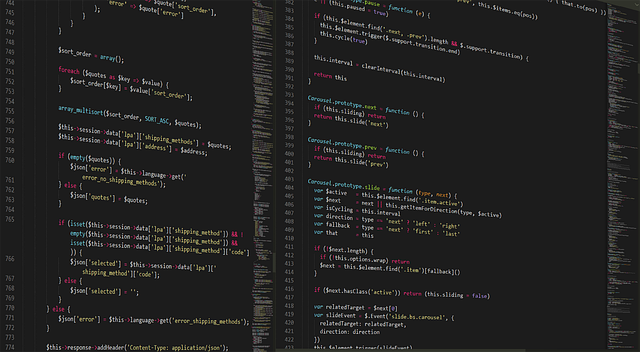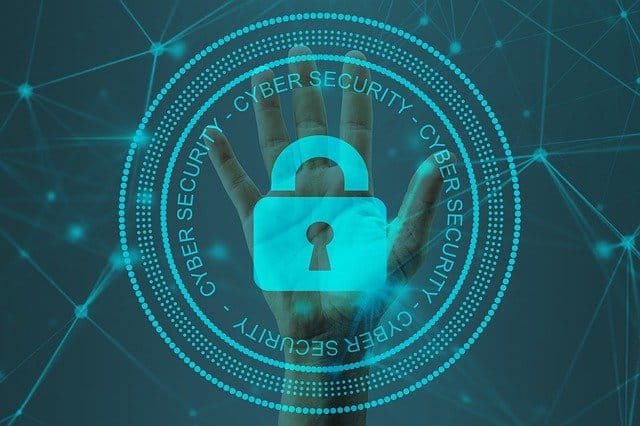As regulatory requirements continue to evolve and data breaches become more common, businesses are under increasing pressure to maintain compliance with industry standards. Compliance monitoring is a crucial aspect of this process, enabling organizations to identify and address potential risks before they lead to costly violations or incidents.
In this blog post, we’ll explore the benefits of a compliance monitoring system and share best practices for implementing an effective program.
The Importance of Compliance Monitoring:
The impact of non-compliance on businesses, customers, and stakeholders.

Compliance monitoring is an essential aspect of any organization’s risk management strategy, as it enables companies to proactively identify and prevent potential legal or regulatory violations. Operating outside of compliance can result in significant financial, legal, and reputational damage to a business, leading to a loss of trust and confidence from both customers and stakeholders.
In today’s complex regulatory environment, compliance monitoring is critical in minimizing these risks and ensuring long-term business success.
Moreover, non-compliance can result in damaging penalties and fines. Regulatory bodies may levy severe sanctions against companies that fail to comply with industry standards, including fines, legal fees, and reputational damage.
Apart from financial penalties, non-compliance also results in delayed product launches, the suspension of marketing campaigns, and other operational disruptions. It can also lead to the revocation of licenses, certifications, permits, and contracts, putting the business at a severe disadvantage in the market.
Compliance monitoring is also critical in preserving customer trust and loyalty. Customers expect businesses to operate with integrity, and failing to do so can result in long-term damage to the company’s reputation. Breaching customer data privacy, for instance, is not only legally sanctioned but can also lead to significant reputational harm.
Compliance monitoring ensures the protection of confidential and sensitive data, hence promoting customer trust and loyalty over time.
Lastly, compliance and internal monitoring are critical in promoting organizational stability. When companies operate within the guidelines of industry standards, they promote a stable working environment for their employees. A culture of compliance fosters high ethical standards and effective risk management, which are critical for the long-term success and sustainability of any business.
A compliance program that is constantly monitored and updated ensures that the company is always in good standing with regulatory bodies, stakeholders, and customers.
Related: https://cybriant.com/who-needs-cmmc-certification/
The Benefits of Compliance Monitoring
How compliance monitoring helps reduce risks, protect assets, and demonstrate accountability.

Compliance monitoring offers businesses a host of benefits, helping them reduce risks, protect their assets, and demonstrate accountability. By implementing an effective audit and compliance program, companies can proactively identify and address potential risks, preventing costly violations and incidents. This, in turn, can lead to a number of benefits for organizations, including:
1. Reduced Legal and Financial Risk
Compliance monitoring helps companies avoid non-compliance penalties and fines, which can amount to millions of dollars. By adhering to regulatory compliance standards, organizations can minimize the risk of expensive lawsuits and legal fees. Moreover, by maintaining compliance with industry standards, companies can reduce the risk of operational disruptions that can occur when dealing with non-compliance issues.
2. Protects Assets & Reputation
Compliance monitoring also helps companies and compliance professionals protect their assets and reputation.
By ensuring that company operations are in line with regulatory standards, businesses can safeguard their intellectual property, sensitive customer and employee data, corporate reputation, and other critical assets. This helps build customer trust and loyalty, ensuring that businesses can maintain a strong reputation in the marketplace.
3. Demonstrates Accountability
An effective compliance monitoring program helps businesses demonstrate their accountability to internal and external stakeholders, regulatory bodies, and customers. This is particularly important in industries such as healthcare and finance, where data privacy and ethical standards are critical. By demonstrating accountability, businesses can win and retain the trust of their stakeholders, customers, and employees, cementing their reputation as trustworthy and ethical players in their respective markets.
4. Increased Efficiency
Compliance and compliance monitoring systems can also help businesses increase their efficiency by streamlining their operations. By automating compliance monitoring and management processes, employees can focus on more productive tasks, speeding up workflows and cutting down on the potential for manual errors.
5. A Competitive Advantage
Finally, compliance monitoring can serve as a competitive advantage in the marketplace. Companies that prioritize regulatory compliance can differentiate themselves from competitors and stand out as trusted industry leaders. This can result in increased customer loyalty and revenue growth, as customers are increasingly seeking out trustworthy and responsible companies to do business with.
In conclusion, compliance monitoring is not only critical for maintaining regulatory compliance but can offer a host of benefits to businesses that prioritize it. By reducing risks, protecting assets, and demonstrating accountability, companies can ensure long-term success and sustainable growth in their respective markets. Ultimately, implementing an effective compliance program is an investment in the future of any business, both in terms of financial returns and reputation.
Key Elements of Effective Compliance Monitoring:
Tips for designing and implementing a successful compliance monitoring program

Effective compliance monitoring requires a comprehensive approach that involves various stakeholders, policies, and processes. By following these best practices, businesses can design and implement a successful program:
1. Create a Compliance Risk Assessment
The first step in developing a compliance program is to conduct a compliance risk assessment. This will help identify any potential areas of non-compliance and assess the level of risk associated with each one. By prioritizing these risks, businesses can allocate resources to the areas that they determine pose the most significant risk to the organization.
2. Develop Policies and Procedures
Once the various compliance risk issues or risks have been identified, the next step is to establish policies, procedures, and guidelines that provide clear requirements for compliance. This will ensure that employees are aware of their responsibilities and expected code of conduct and that the company’s compliance program is adequately communicated to them.
3. Train Employees
Proper training is critical to further ensure compliance and that employees understand their roles and responsibilities in maintaining compliance with the relevant regulations. Training should be conducted regularly and include all relevant employees, including senior management, as they are ultimately responsible for setting the tone at the top and fostering a culture of compliance across the organization.
4. Implement Monitoring and Testing Strategies
Regular monitoring and testing are essential to ensure that the compliance program is effective and identifies any violations promptly. Technology-enabled solutions, such as compliance management software, can help automate monitoring processes, allowing real-time identification of potential issues. This technology can also support the collection and analysis of data for trend analysis, continuous monitoring, process improvement, and decision-making.
5. Implement Corrective Action and Remediation Plans
If non-compliance is identified, businesses must implement corrective action or remediation plans as appropriate. This should include steps to prevent the issue from recurring, such as revising policies and procedures, improving employee training, or investing in better technology solutions. Corrective actions must also be tracked and documented to ensure they are implemented effectively and consistently.
6. Compliance
Continuous improvement is at the heart of any successful compliance monitoring program. The compliance program should be reviewed and updated regularly to reflect changes in regulations or business operations, along with technological advancements. Compliance is a moving target, and a robust compliance monitoring program must be agile and adaptable to respond to evolving risks and regulatory requirements.
By implementing these key elements of effective compliance monitoring, businesses can minimize risks, safeguard assets and reputation, and demonstrate their commitment to ethical and lawful conduct. In the long run, this can provide businesses with a significant competitive advantage, while maintaining the trust of customers, employees, and regulatory bodies.
Outsourced Managed Services for Compliance Monitoring
How Managed SIEM can simplify Your Compliance Monitoring Program

Managed SIEM (Security Information and Event Management) services are crucial for compliance monitoring as they help businesses stay ahead of potential security threats and prevent incidents that could lead to regulatory non-compliance. SIEM is a software solution that enables companies to monitor their IT infrastructure for potential security breaches and manage security-related incidents. By relying on a third-party vendor to manage their SIEM, businesses can benefit from a range of advantages.
For instance, managed SIEM services can provide a more cost-effective solution as businesses avoid the need to make significant capital investments in hardware, software, and maintenance. Managed services also enable businesses to focus their resources on core competencies instead of dedicating staff to monitor the system 24/7. This allows the internal IT team to focus on more strategic initiatives, such as implementing new systems or improving operational efficiencies.
Another significant advantage that managed SIEM services offer is their ability to provide real-time monitoring and analysis of system logs, events, and network traffic. This enables organizations to identify potential security threats early and respond immediately to mitigate risk. Real-time threat intelligence helps businesses prevent data breaches, which are one of the most significant compliance risks for any organization.
Additionally, managed SIEM provides businesses with access to a team of cybersecurity experts who are trained to monitor, analyze, and respond to potential security incidents. This expertise is particularly important for businesses that do not have the resources to hire dedicated cybersecurity staff. Managed services providers employ staff with diverse cybersecurity backgrounds and expertise, providing businesses with a team of specialists at a fraction of the cost compared to hiring in-house staff.
Finally, managed SIEM services also offer businesses the ability to receive compliance reports on a regular basis. These reports can be customized based on specific regulatory requirements or internal compliance policies themselves, providing executives and stakeholders with a clear view of their organization’s compliance posture. This information is critical for demonstrating transparency and accountability to regulatory bodies and internal stakeholders.
In summary, managed SIEM services are an essential aspect of any business’s compliance monitoring program, providing the real-time monitoring, analysis, and reporting capabilities that organizations need to maintain regulatory compliance. By outsourcing SIEM to a trusted managed services provider, businesses can reduce costs, access expert resources, and benefit from real-time threat intelligence. Ultimately, this helps businesses deliver a safe and secure environment for their customers, employees, and shareholders.
Challenges of Compliance Monitoring:
Common challenges faced by businesses when implementing a compliance monitoring program and ways to overcome them.
Compliance monitoring is an integral part of a business risk management strategy, and it has become increasingly important in today’s complex regulatory landscape. While there are many benefits of compliance monitoring, implementing an effective program can be challenging. Here are the top challenges businesses face when implementing a compliance monitoring program:
1. Lack of Resources:
Compliance monitoring requires significant resources, including financial, human, and technical resources. Businesses need sufficient resources to implement an effective compliance program, including the development and implementation of policies and procedures, training, a compliance monitoring plan itself, and reporting. However, smaller businesses may struggle to allocate sufficient resources for compliance monitoring, making it challenging to maintain compliance with regulatory requirements.
2. Complexity of Regulations:
Regulations are complex and ever-changing, and keeping up with them can be overwhelming. Compliance monitoring requires businesses to understand and adhere to complex regulatory requirements and standards across different jurisdictions. This can be challenging, especially for multinational corporations that operate across different regulatory environments.
3. Manual Processes:
Compliance monitoring can be a time-consuming process that requires significant manual effort. Traditional compliance management processes rely heavily on manual processes, leading to increased complexity, errors, and inaccuracies. This can lead to missed compliance requirements, regulatory breaches, and operational disruptions.
4. Lack of Accountability:
Compliance monitoring requires a high degree of accountability, both at the individual and organizational levels. Without a culture of accountability, implementing an effective compliance program can be challenging. Employees need to understand the importance of compliance and take responsibility for their actions. Additionally, leadership needs to prioritize compliance and set the tone from the top, ensuring that the compliance policy is embedded in the organization’s culture.
5. Mismatched Technologies:
Implementing a compliance monitoring program requires the use of many technologies, including compliance management software, data analytics software, and reporting tools. It can be challenging to integrate these technologies fully, leading to issues with data accuracy, duplication, and compliance gaps.
To overcome these challenges, businesses need to invest in an effective compliance monitoring plan, allocate sufficient resources, and prioritize compliance from the top down. Automating compliance management processes, establishing clear accountability, and choosing the right technology can also help businesses implement an effective compliance monitoring program. Implementing an effective compliance monitoring program can be a daunting task, but the benefits for businesses are significant. By avoiding costly penalties, protecting assets, and demonstrating accountability, companies can ensure long-term success and sustainability in their respective markets.
Conclusion
In conclusion, compliance monitoring is a crucial aspect of any business’s risk management strategy, enabling organizations to identify and address potential risks before they lead to costly violations or incidents. By continuously monitoring compliance and implementing corrective actions, businesses can reduce legal and financial risks, protect assets and reputation, demonstrate accountability, increase efficiency, and gain a competitive advantage.
However, implementing an effective compliance program can be challenging due to a lack of resources, complexity of regulations, manual processes, lack of accountability, and mismatched technologies.
Therefore, businesses must invest in compliance monitoring, allocate sufficient resources, prioritize and monitor compliance from the top down, automate compliance management processes, establish clear accountability, and choose the right technology to overcome these challenges and reap the benefits of a successful compliance monitoring program. Ultimately, compliance monitoring is an investment in the future and sustainability of any business, both financially and reputationally



